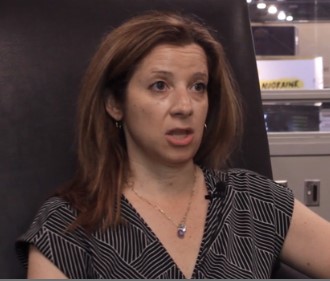User login
PHILADELPHIA – , according to research presented at the annual meeting of the American Headache Society. The data raise the question of whether modifying light exposure could reduce headache frequency in this population, said Suzanne M. Bertisch, MD, MPH, a physician and clinical investigator in the division of sleep and circadian disorders at Brigham and Women’s Hospital in Boston.
About 40% of patients with migraine identify light as a trigger. Most studies that have examined the association between light and migraine onset have been retrospective and have relied on subjective measures of light exposure.
From March 2016 to August 2017, Dr. Bertisch and colleagues enrolled 101 adults with episodic migraine into a prospective cohort study. For 79 of these participants, light exposure was measured continuously for 6 weeks by actigraph. In the morning and evening, participants recorded data such as headache onset, duration, and intensity in electronic headache diaries. They also recorded data about covariates such as caffeine intake, alcohol intake, sleep, and stress.
Dr. Bertisch and colleagues divided the day into four 6-hour periods and calculated mean light exposure within each period. After researchers adjusted for covariates, they found that higher mean photopic illuminance was associated with a 12% higher risk of headache during the same period. Mean photopic illuminance was not associated with headache onset in the next period, however.
Dr. Bertisch had no disclosures relevant to this study.
PHILADELPHIA – , according to research presented at the annual meeting of the American Headache Society. The data raise the question of whether modifying light exposure could reduce headache frequency in this population, said Suzanne M. Bertisch, MD, MPH, a physician and clinical investigator in the division of sleep and circadian disorders at Brigham and Women’s Hospital in Boston.
About 40% of patients with migraine identify light as a trigger. Most studies that have examined the association between light and migraine onset have been retrospective and have relied on subjective measures of light exposure.
From March 2016 to August 2017, Dr. Bertisch and colleagues enrolled 101 adults with episodic migraine into a prospective cohort study. For 79 of these participants, light exposure was measured continuously for 6 weeks by actigraph. In the morning and evening, participants recorded data such as headache onset, duration, and intensity in electronic headache diaries. They also recorded data about covariates such as caffeine intake, alcohol intake, sleep, and stress.
Dr. Bertisch and colleagues divided the day into four 6-hour periods and calculated mean light exposure within each period. After researchers adjusted for covariates, they found that higher mean photopic illuminance was associated with a 12% higher risk of headache during the same period. Mean photopic illuminance was not associated with headache onset in the next period, however.
Dr. Bertisch had no disclosures relevant to this study.
PHILADELPHIA – , according to research presented at the annual meeting of the American Headache Society. The data raise the question of whether modifying light exposure could reduce headache frequency in this population, said Suzanne M. Bertisch, MD, MPH, a physician and clinical investigator in the division of sleep and circadian disorders at Brigham and Women’s Hospital in Boston.
About 40% of patients with migraine identify light as a trigger. Most studies that have examined the association between light and migraine onset have been retrospective and have relied on subjective measures of light exposure.
From March 2016 to August 2017, Dr. Bertisch and colleagues enrolled 101 adults with episodic migraine into a prospective cohort study. For 79 of these participants, light exposure was measured continuously for 6 weeks by actigraph. In the morning and evening, participants recorded data such as headache onset, duration, and intensity in electronic headache diaries. They also recorded data about covariates such as caffeine intake, alcohol intake, sleep, and stress.
Dr. Bertisch and colleagues divided the day into four 6-hour periods and calculated mean light exposure within each period. After researchers adjusted for covariates, they found that higher mean photopic illuminance was associated with a 12% higher risk of headache during the same period. Mean photopic illuminance was not associated with headache onset in the next period, however.
Dr. Bertisch had no disclosures relevant to this study.
EXPERT ANALYSIS FROM AHS 2019
